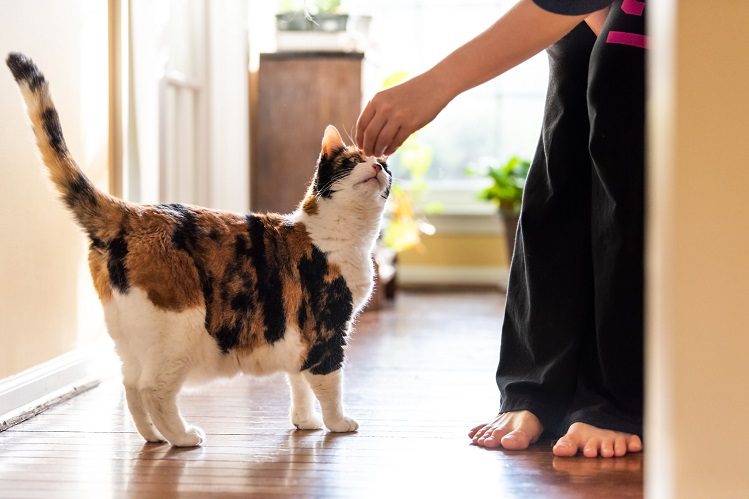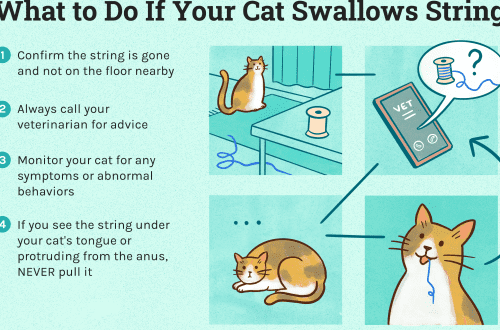
5 cat tricks you can learn today
Maria Tselenko, a veterinarian, a specialist in the correction of the behavior of cats and dogs, tells.
Contents
How to teach a cat tricks
It is believed that cats and training are incompatible things. This misconception arose from the old harsh methods of raising dogs. Cats are more reverent pets, so only positive methods work with them. That is, the process must be built in such a way that the pet itself makes movements. Even light hand pressure should be avoided in cat training. “Why train them?” You ask. And I will answer you: “To diversify their boring life within four walls.”
To be successful, you will need to find a truly valuable treat for your furry friend. After all, he will have to make an effort to get the award. Let’s see what tricks you can teach a cat.
The cat sits on command
To get started, try teaching your cat to sit on command. Arm yourself with the treat your cat has chosen and sit down in front of her. Bring a piece of treat to the cat’s nose and when she is interested, move your hand slowly up and back a little. The movement should be so smooth that the pet has time to reach for your hand with its nose. If the cat stood up on its hind legs, it means that you are raising your hand too high.
Noticing that the cat stretched up as much as possible – freeze at this point. For a pet, this is not a very comfortable position, and most will guess to make it more comfortable for themselves, that is, they will sit down. When your cat sits down, immediately give her a treat.
When the cat starts to sit down, as soon as your hand starts moving up, add a voice command. It should be pronounced before the movement of the hand. Gradually make the movement of the treat less noticeable and further away from the cat. Then, over time, the cat will learn to perform the action according to the word.

The cat sits on its hind legs
From a sitting position, we can teach a cat the following trick: to sit on its hind legs.
Bring a piece of treat to the fluffy’s nose and begin to slowly raise your hand up. Give the cat a treat as soon as it lifts its front paws off the floor. Some cats may grab your hand with their paws if the movement is too fast. In this case, do not give the cat the reward, try again.
Gradually add a voice command and move your hand further away from the pet. For example, you can name this trick “Bunny”.
The cat is spinning
By the same principle, you can teach a cat to spin.
When the cat is standing in front of you, follow the piece around in a circle. It is important to move the hand precisely along the radius, and not just back towards the tail. Imagine that you need to circle the cat around the post. In the beginning, reward your pet for every step.

The cat jumps over the leg or arm
A more active trick would be to jump over your arm or leg. To do this, stand at some distance from the wall facing the cat, and lure it with a delicacy into the space in front of you. Extend your arm or leg in front of the cat, touching the wall. At first, make a small height so that the cat cannot crawl from below. Show the cat a treat on the other side of the obstacle. When she crosses or jumps over him, praise and give the reward.
Repeat this several times – and if everything works out, add the command. Next time try moving away from the wall a little. If the cat chooses not to jump, but to go around the obstacle, do not give her a treat for this attempt. Return a couple of repetitions to the original version to remind the pet of the task. Then try to complicate it again.
The cat jumps on things
 Another active exercise is jumping on objects. First, take a small object, such as a large thick book or turn the bowl upside down. Show the cat a treat and move it with your hand with a piece on the object. Cats are neat animals, so take your time. You can even give rewards for the intermediate stage: when the pet put only its front paws on the object.
Another active exercise is jumping on objects. First, take a small object, such as a large thick book or turn the bowl upside down. Show the cat a treat and move it with your hand with a piece on the object. Cats are neat animals, so take your time. You can even give rewards for the intermediate stage: when the pet put only its front paws on the object.
When your furry friend is comfortable with the task and will easily enter the object, say the command “Up!” and show a hand with a treat on the subject. Your hand should be above it. Praise and reward the cat as soon as it climbs onto the dais. Gradually use higher items.
Remember that cats are creatures with character. Training sessions need to be adjusted to the pet’s regimen. Choose a period for classes when cats are active. Keep lessons short and end on a positive note.
And don’t forget to share your successes with us!





